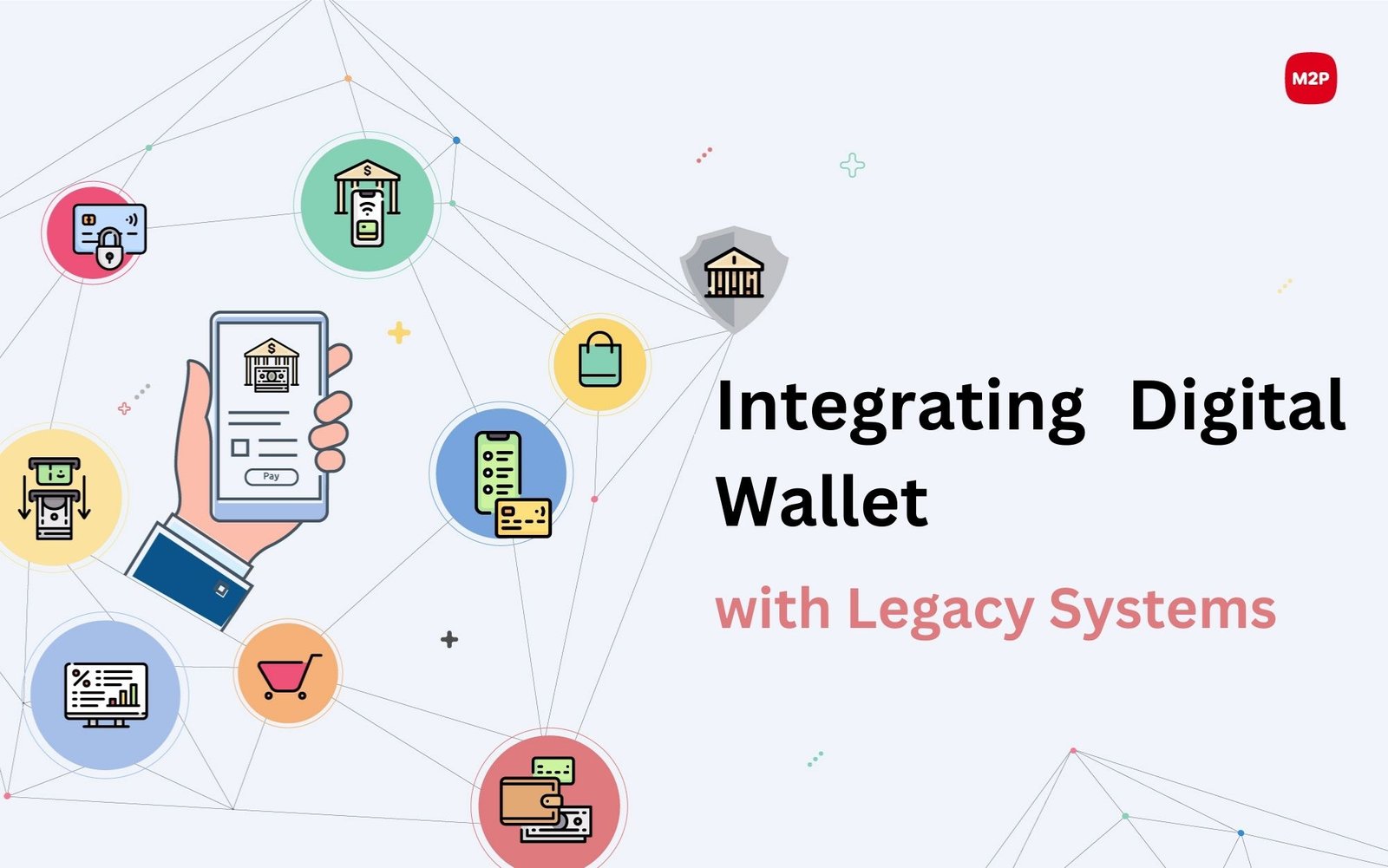Tech
Integrating Digital Wallet with Legacy Systems: Challenges and Solutions
Published
1 year agoon
By
Jack
A digital wallet is a virtual wallet that securely stores payment information and enables users to make seamless transactions.
As the world moves towards a cashless society, it’s crucial for legacy systems to keep pace with technological advancements. Integrating digital wallets with legacy systems opens up new avenues for businesses to connect with customers and offer convenient and efficient payment solutions.
In this blog, we will delve into the challenges and solutions of integrating digital wallets with legacy systems. We aim to provide a comprehensive guide for businesses looking to adopt this technology and provide a seamless customer experience.
Table of Contents
ToggleOvercoming the Challenges of Integrating Digital Wallets with Legacy Systems
Technical Difficulties
Integrating digital wallets with legacy systems often involves compatibility issues and technical difficulties. This can range from software compatibility, integration with multiple systems, and compatibility with existing payment methods.
Integration with Multiple Systems
Legacy systems often have a complex infrastructure and architecture, making it challenging to integrate digital wallet solutions seamlessly. The integration process may require significant time and resources, which can be a barrier for businesses looking to adopt this technology.
Security and Privacy Concerns
Security is a key concern when integrating digital wallets with legacy systems. Legacy systems often have sensitive information and data, and it’s important to ensure that the integration process does not compromise the security of the system. Additionally, privacy concerns also need to be addressed as digital wallets store sensitive payment information.
To overcome these challenges, businesses must approach the integration process with a well-defined strategy and a strong focus on security and privacy. A systematic approach, coupled with the right technology and expertise, can help businesses successfully integrate digital wallets with legacy systems, and stay ahead of the curve in the ever-evolving world of payments.
Innovative Solutions to Streamline Integration
API Integration
Application Programming Interfaces (APIs) can be used to seamlessly integrate digital wallets with legacy systems. APIs enable communication between systems, allowing businesses to streamline the payment process and provide a seamless experience for customers.
For example, businesses can use APIs to integrate digital wallets with their e-commerce platform, enabling customers to easily make payments without having to leave the website.
Middleware Implementation
Middleware can act as a bridge between digital wallets and legacy systems, helping to streamline the integration process. By using middleware, businesses can ensure compatibility between systems, minimize downtime, and reduce the risk of technical difficulties.
For instance, a middleware solution can be used to integrate digital wallets with a legacy point-of-sale (POS) system, enabling customers to make payments using their digital wallets.
Cloud Computing
Cloud computing can also be utilized to integrate digital wallets with legacy systems. Cloud-based solutions are scalable and flexible, making them ideal for businesses looking to adopt digital wallets. By leveraging the power of the cloud, businesses can easily integrate digital wallets with legacy systems and provide a seamless customer experience.
Example: A cloud-based solution can be used to integrate digital wallets with an existing accounting system, enabling businesses to manage their finances more efficiently.
Adoption of Standard Protocols and Technologies
Adopting standard protocols and technologies can greatly simplify the integration process between digital wallets and legacy systems. By standardizing the technology, businesses can ensure compatibility and minimize technical difficulties.
Example: Businesses can adopt the Payment Card Industry Data Security Standard (PCI DSS) to ensure the security and privacy of customer information during the integration process.
By implementing these innovative solutions, businesses can overcome the challenges of digital wallets integration with legacy systems, and provide customers with a seamless payment experience.
Best Practices for a Seamless Integration Experience
Effective Communication and Collaboration
Effective communication and collaboration between teams are crucial for successful integration. This includes ensuring that all stakeholders, including the IT team, business leaders, and customer support staff, are aware of the integration process and have a clear understanding of their roles and responsibilities.
Regular Testing and Monitoring
Regular testing and monitoring of systems are essential to ensure that the integration process is running smoothly and that any potential issues are identified and addressed quickly. This includes conducting regular security audits, stress tests, and performance assessments to ensure that systems are secure and reliable.
Staying Ahead of Technology Advancements
Staying ahead of technology advancements is critical for businesses looking to integrate digital wallets with legacy systems. Keeping up with the latest technology developments and incorporating new innovations into the integration process can help businesses remain competitive and meet the evolving needs of their customers.
Implementing Strong Security Measures
Implementing strong security measures is essential for ensuring the safety of customer information and transactions. This includes encrypting sensitive information, implementing firewalls and intrusion detection systems, and regularly updating security protocols to stay ahead of potential security threats.
By following these best practices, businesses can ensure that their integration process is seamless, secure, and efficient, leading to an improved customer experience and increased business growth.
Real-life examples
- A grocery store chain that has been using a traditional point-of-sale (POS) system for many years wants to allow customers to make purchases using their digital wallets. The store integrates its legacy POS system with a digital wallet provider to enable customers to easily pay for their purchases using their mobile devices.
- A public transportation company has a legacy ticketing system that uses magnetic stripe tickets. The company integrates a digital wallet solution with its legacy system to allow customers to store their transit tickets electronically and make payments using their mobile devices.
- A large multinational corporation has a legacy accounting system that has been in use for decades. The corporation integrates a digital wallet solution with its existing system to allow employees to make business expenses using their mobile devices, streamlining the expense reporting process.
- A government agency that provides various services to citizens has a legacy system that tracks services and payments. The agency integrates a digital wallet solution with its existing system to allow citizens to make payments and access services using their mobile devices, improving the efficiency and convenience of its services.
Future Trends in Digital Wallet Integration
The integration of digital wallets with legacy systems is a rapidly evolving field and it’s crucial to stay ahead of the curve to stay competitive. In this section, we’ll take a look at some of the trends and advancements that are shaping the future of digital wallet integration.
Advancements in technology
With technological advancements, the integration process has become easier, faster, and more efficient. In particular, advancements in cloud computing, Artificial Intelligence, and blockchain technology are driving the integration of digital wallets with legacy systems.
Increased adoption of mobile payments
Mobile payments are rapidly gaining traction, and digital wallets are becoming a popular way for consumers to make transactions. This trend is leading to an increased demand for integration between digital wallets and legacy systems and is proving to be a gold mine for the future of digital banking.
The role of Artificial Intelligence
Artificial Intelligence is playing an increasingly important role in digital wallet integration by helping to automate complex processes and improve the user experience.
The impact of regulation on integration
Government regulations play a crucial role in shaping the future of digital wallet integration. It’s essential to stay aware of the latest regulations and comply with them to ensure successful integration.
Future outlook and predictions
As the integration of digital wallets with legacy systems continues to evolve, it’s expected that these systems will become even more sophisticated, providing users with enhanced security, improved efficiency, and an overall better user experience.
This blog has explored the challenges and solutions of integrating digital wallets with legacy systems, and the best practices for a seamless integration experience.
The integration of digital wallets with legacy systems opens up new avenues for businesses to connect with customers and provide efficient payment solutions. As the world continues to move towards a cashless society, businesses that embrace digital wallets and legacy systems integration will have a competitive advantage in the marketplace.
Final Words
Integrating digital wallets with legacy systems can be a complex process, but with the right technology and expertise, businesses can overcome the challenges and reap the benefits of this innovative technology.
By following the best practices outlined in this blog, businesses can ensure that their integration process is seamless, secure, and efficient, leading to an improved customer experience and increased business growth.

